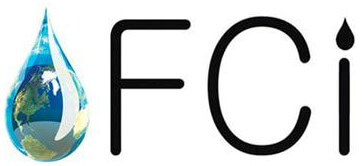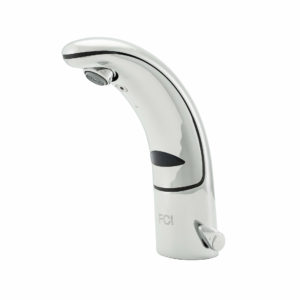Summary: Touchless faucets provide the latest advancements in faucet technology offering the convenience of easy function. When renovating there are special considerations if you want to install touchless faucets. It goes beyond design and material but must also include the configuration for installation, from wall or deck mounted styles, as well as your choice of spout based on your space and the tasks you need to perform. The style also determines the type of plumbing required which impacts costs. The motion sensor power source is another important consideration as it tells you whether or not you need electrical work. Understanding these factors and how they impact your design can save you time and money on your next home renovation.
Table of Contents
- Introduction
- Choosing Wall Mount vs Deck Mount Touchless Faucets
- Deck-mounted
- Wall-mounted
- Faucet “Spout” Design
- Curved neck
- Gooseneck
- Long neck
- Power Source
- Battery-operated
- Alternating current (AC) transformer
Quite often, it is the little details and conveniences that can make your renovation a success. A good example is considering new technology that makes life easier. Touchless faucets are a perfect example. Touchless faucet technology allows you to turn your tap on and off with the swipe of your hand.
Using motion detectors, the valve is turned on or off to control the flow of water. With today’s concerns for the spread of germs as well as homeowners using more and more technology in their homes, the touchless faucet is one more convenience that makes life easier.
When you are planning your next home renovation it’s always a good idea to consider the conveniences that will make a space not only more beautiful but also more functional. Here we offer design tips to choose the right touchless faucet for your next home renovation.
Choosing Wall Mount vs Deck Mount Touchless Faucet
This is an important decision you should make quite early on in the renovation process. It dictates not just factors such as the positioning of the sink, but also the type of bathroom vanity you order. Here are the considerations to help you decide which faucet is right for you:
Deck-Mounted Faucets
Deck mounted faucets are installed in the counter. This is especially important in the bathroom if you are replacing the vanity, as many vanity counters come with pre-drilled holes for a deck-mounted faucet. Some other considerations include:
- Installation: If the water supply line already exists from the wall below the sink, deck-mounted faucets are easier to install. Additionally, it won’t require additional thought for the plumbing which saves money. It also means if you have a brand new marble counter in the kitchen or bathroom, the holes will have to be drilled in the marble to reach the water supply lines. This increases the risk for damage to the marble if not handled properly.
- Benefits: Deck-mounted faucets are timeless so they are less likely to date your renovation too soon. If you want to avoid special plumbing, it is also a more affordable installation and renovation choice.
Wall-Mounted Faucets
Wall-mounted faucets are of course mounted on the wall. They can be used when you want a more modern look, but can also serve a more practical purpose if there are space limitations or you want more space on the counter. Some considerations when choosing wall-mounted faucets include:
- Installation: As mentioned, standard plumbing calls for deck-mounted faucets. Since you are renovating you can include the necessary plumbing work, but of course, this is at an additional cost. The water supply lines need to be rerouted up and into the wall which damages existing drywall, but if the walls are already open it makes it a little easier and offers an opportunity to get the look you want.
- Benefits: Wall-mounted faucets offer an ultra-modern look while providing more counter space. They become a focal point in bathrooms and kitchens, and in cases where your walls are already open, it really shouldn’t cost that much more than a deck-mounted faucet.
FCI offers both options in their selection of touchless faucets.
Faucet “Spout” Design
Along with the wall or deck mounting options, you also have your choice of “necks” or spouts. This is where the water flows from the faucet. The spout design is important not only to the look but also to the function of the faucet. The height of the spout is quite important especially for kitchens where you need room for dishes and large pots. As well spout reach is important if you have two or three sinks. For bathrooms, a short reach can also lead to issues with the water sloshing more when you test the water temperature or wash your hands. When choosing your faucet neck design you have three basic options:
- Curved faucets: Curved faucets are a good choice for bathroom sinks and tubs as they look stylish while avoiding too much sloshing.
- Gooseneck faucets: These are designed with kitchens in mind accommodating large pots and allowing you to manage tasks such as washing dishes or draining pasta easier. However, there are also goosenecks available for bathrooms when you need a special faucet to accommodate your vanity due to the size of your sink or where space is limited.
- Long neck faucets: These are perfect for bathrooms offering a sleek, modern design while allowing enough room to wash your hands.
Considering your space and tap use will help ensure the reach is right, the design suits your taste, and you can perform the tasks required in the space. FCI can provide guidance to help you choose the right faucet for your space.
Power Source
Touchless faucets have sensors that require power. This is important to renovations as it allows you the opportunity to consider installing a power source. There are two power sources:
- Battery-operated: These faucets tend to be more affordable but also require battery replacement. You can install them anywhere since they don’t require a power connection. If you are concerned about the cost and hassle of battery replacement, look at energy-efficient models that conserve battery use or better yet,you can use rechargeable batteries.
- Alternating current (AC) transformer: These models require a plug. In most cases, this power source isn’t realistic since most kitchens don’t have a nearby power source. However, since you are undergoing renovations, you have the opportunity to install an AC transformer by the sink, so you don’t have to worry about batteries. Just keep in mind both the faucet and electrical would increase the cost of installation.
Both options are viable solutions during a renovation project, with the battery-powered option the more affordable and simpler to install. We can help you find a suitable touchless faucet for your renovation project.
Using these tips help you understand how each element of the touchless faucet impacts your design, saving you time and money on your next home renovation. Click here to view the extensive touchless faucets available at FCI.







